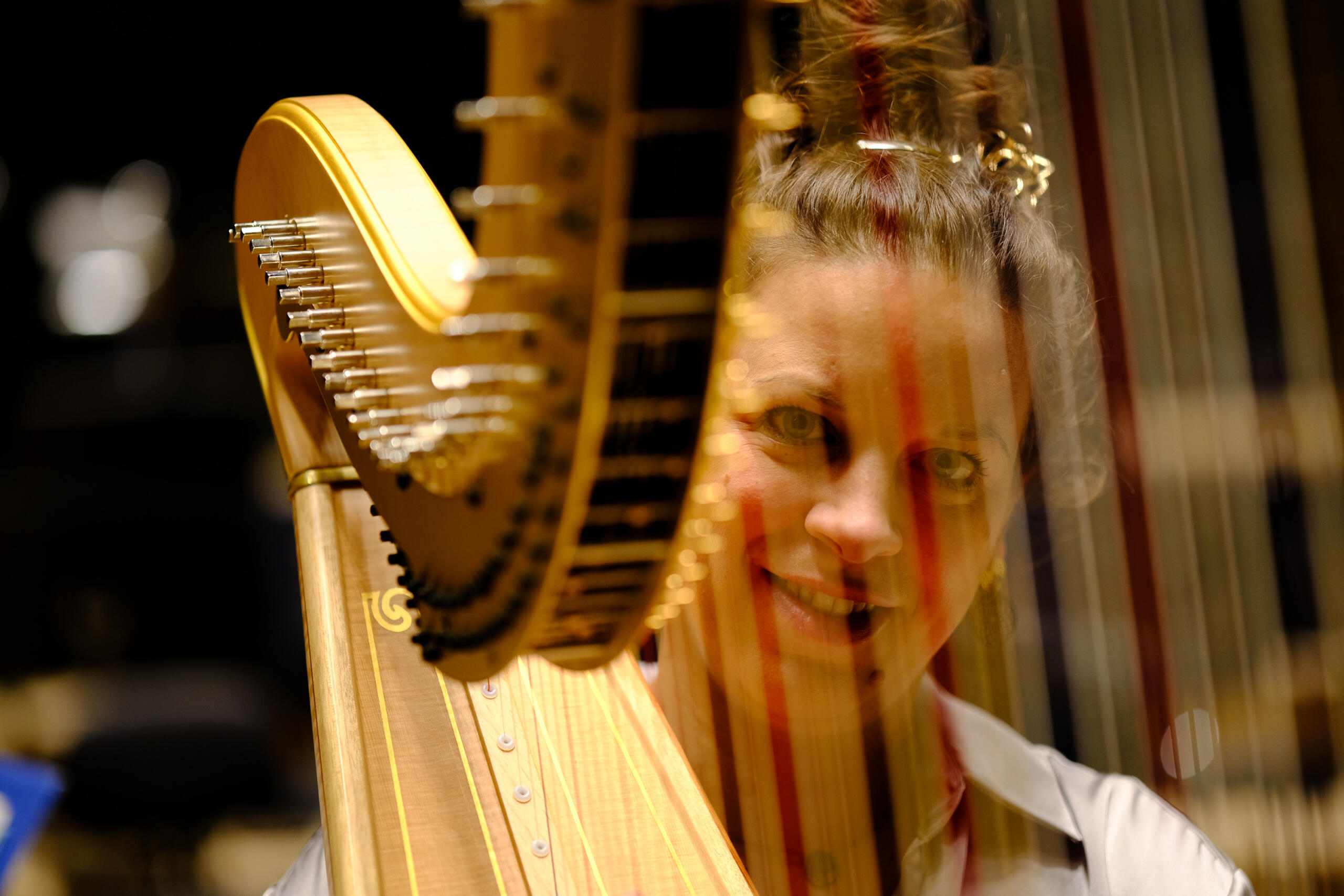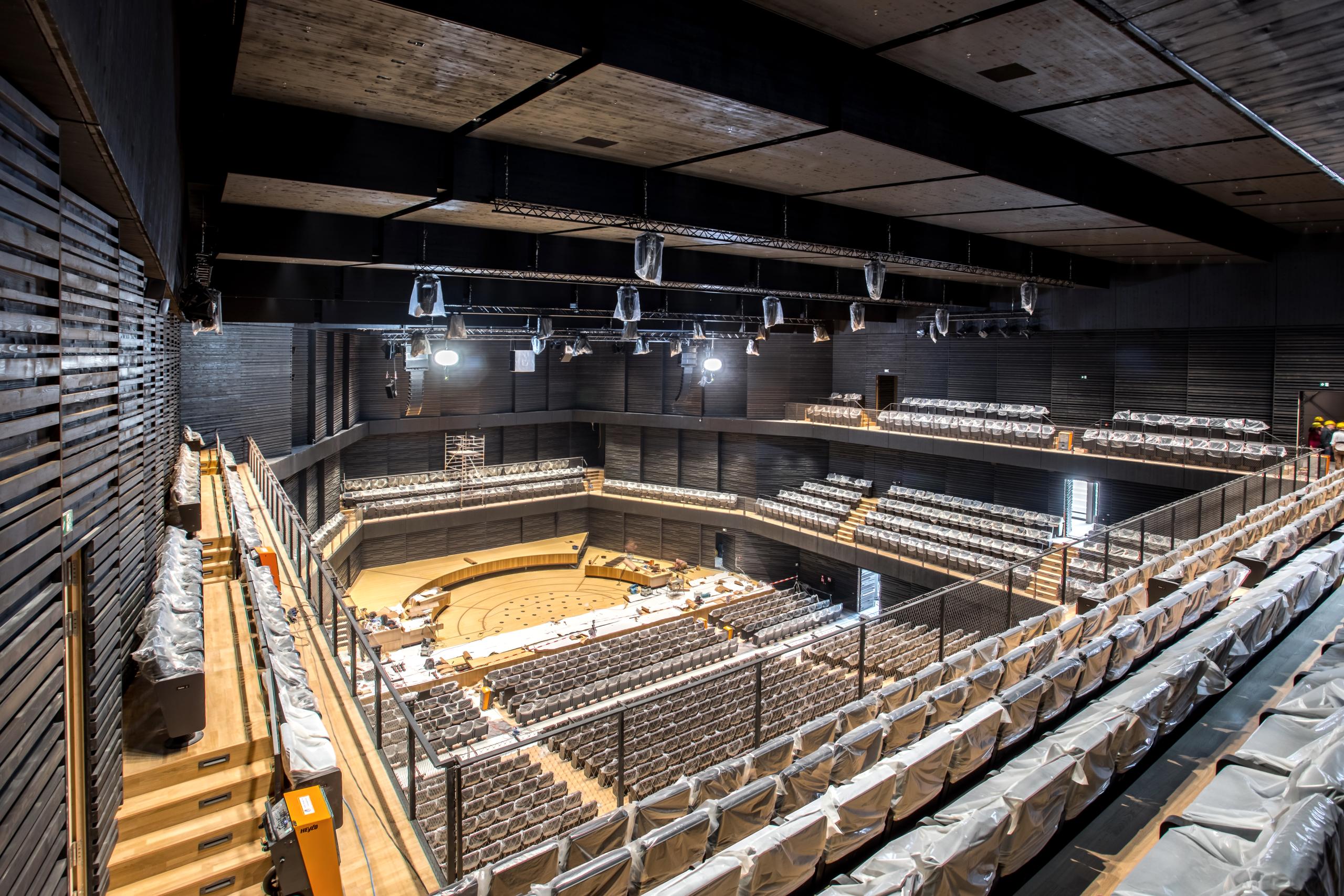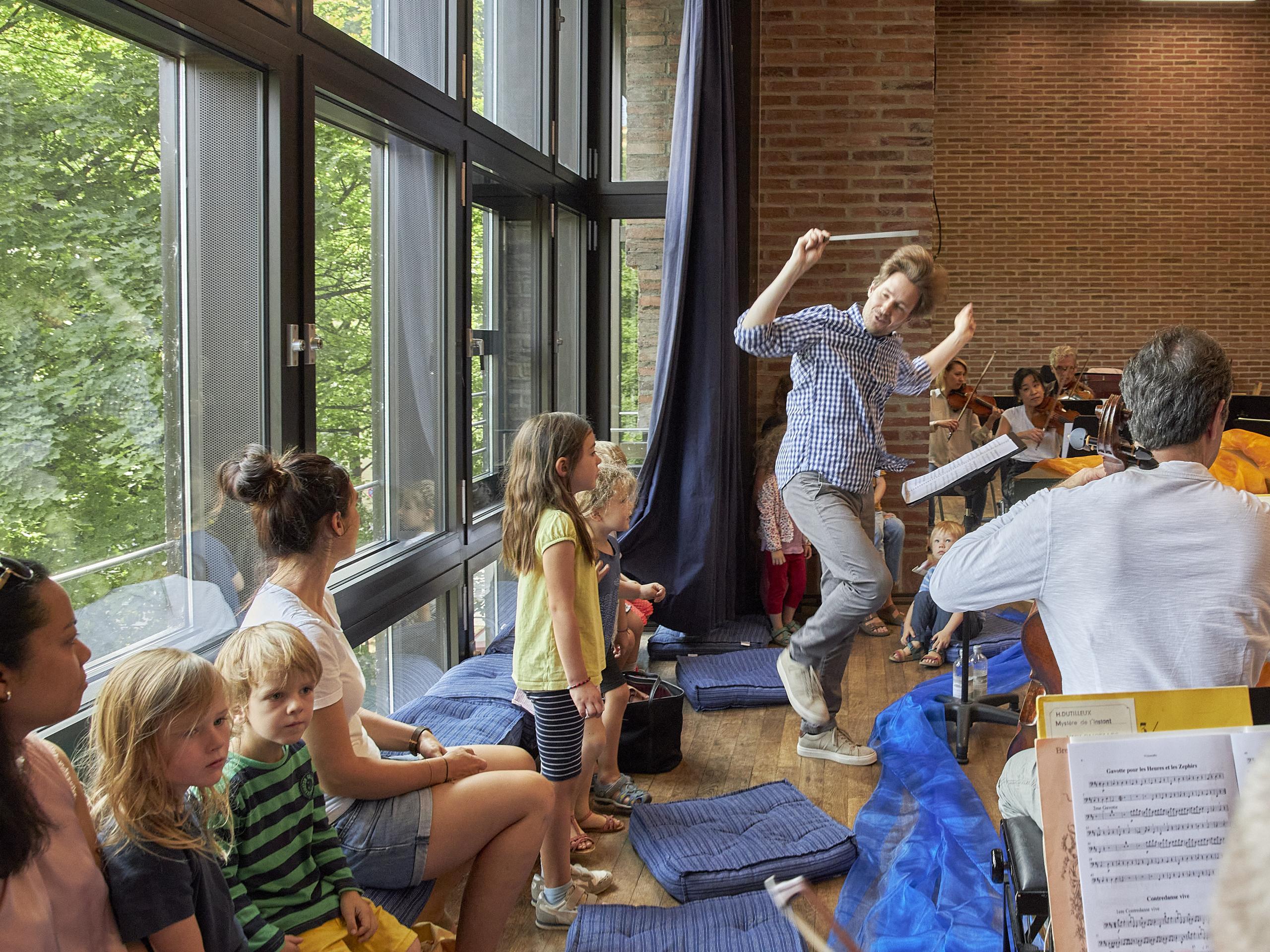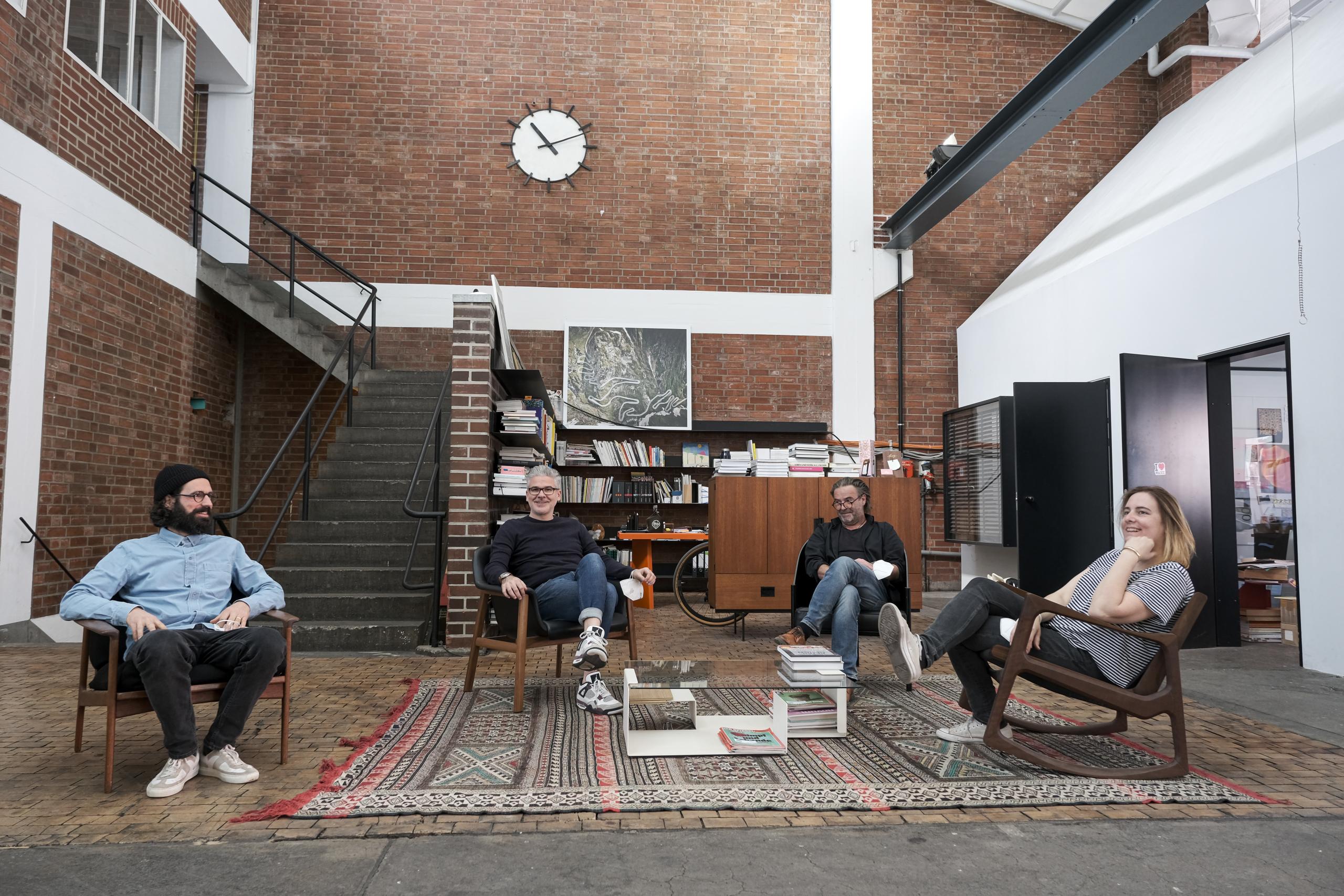Teresa, why is the harp such a heavenly instrument?
The harp is one of the world’s oldest instruments; its history goes back long before the birth of Christ. Its sound has a calming effect, which is why it is also used in therapy. The harp really does have something grounding about it. In orchestras, it links up the various voices. Its sound – round, soft, never too loud or painful for the ears – permeates the whole body. What’s special about it is that the sound is produced without any aids, like a bow or keys, so you can influence the sound directly with your own hands. As a five-year-old at my music school, I had the chance to play a small Irish harp. As I plucked it with my fingers, it immediately made a beautiful sound that really grabbed me.
As a harpist, do you sometimes feel like an angel with supernatural abilities?
(laughs) As a harpist, I’m actually the opposite of angelic. The sound is hard to produce. You need a lot of strength – nothing for delicate hands. The strings have an incredible tension and the fingers have work hard to make them sound. Playing a double-action pedal harp, I need good coordination between my hands and feet. My harp has 47 strings and 7 pedals. Pressing a pedal shortens the string, so that it sounds a semitone higher. So in addition to my hands, there’s a second program running in my head for what my feet are doing. To avoid the sound of the pedals being heard, you have to press them at exactly the same time as plucking a string. Unfortunately, my feet tend to slow down when I’m nervous, which is why I train them specially to keep up the tempo as well as working independently of my hands.
“We harpists have very strong hands; especially the fingers become quite muscular. After 35 years on the harp, I can open any jar or bottle.”

You have been the Munich Philharmonic’s only solo harpist since 2014. But is it all as wonderful as it sounds?
I’m actually very happy in this special position. But it takes many years of experience to stand your ground as a solo harpist in a top orchestra. Nobody helps you with the cues. You have to study scores and listen to recordings intensively beforehand. What’s stressful is when a string breaks during a concert. Will I manage to put on a new string, do I switch to a second harp (if there is one), or do I continue playing without the string? What bothers me sometimes is the time it takes to prepare for complex modern pieces. Most composers come from the piano and tend to write with the piano in mind. It’s a lot of work to make these pieces playable on the harp, and I often have to rewrite them myself. You have to work intensively with the harp to find out what sounds good on the instrument.
Do you have to lug your harp across Munich for every rehearsal?
No, fortunately not. When I started playing the harp, my parents actually bought an estate car for my bulky instrument. But after my successful trial period as solo harpist at the Munich Philharmonic, I could to choose a “service harp”. This always stays with the orchestra, is transported to the concerts by lorry and is also insured by the Munich Philharmonic. Naturally, I chose a harp that I liked the sound of and that best suited my posture and my relatively small hands. I have the same harp at home and there’s a third one at my parents’ in Hanover.


Did you know? Harp facts and figures
- Weight: 35 to 40 kilos
- Height: 1.82 cm (taller than Teresa)
- 47 strings made of steel, nylon and gut
- Seven pedals, covered in leather to make them quieter and easier to operate
- Harpist’s hands: thick calluses on the fingertips, no rings (get in the way when damping strings), no nail varnish (makes fingers heavier and slower)
- The harp’s mechanism is adjusted once a year: A technician adjusts the semitones precisely and replaces the steel strings
Want to experience Teresa and her harp?
Text: Maria Zimmerer




